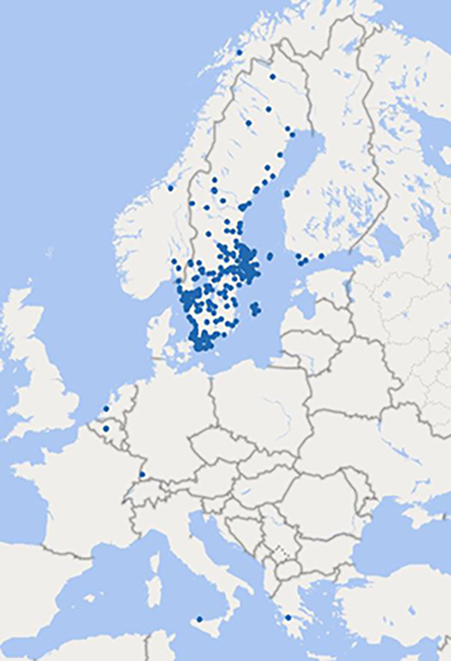This year’s SciFest has just shut up shop. The digital platform used for the festival’s more than one hundred activities was active during the days the festival ran, 4–10 March and some of the films with the researchers will be subtitled and then posted on the SciFest website – one of the advantages of the online format.
Another advantage is that the festival has been very successful in extending its reach across the country, in terms of both booked activities for schools and logins by the general public, who have come to the digital ‘fair site’ to watch films about research, access experiments and chat with scientists.
“We have had thousands of visitors from all over the country, from Kiruna in the north to Malmö in the south. Visitors also came from neighbouring countries, Norway and Finland, and from several countries in Europe, such as Italy and Greece. But we even had visitors from Australia, Canada and India,” says deputy project manager Katarina Holmborn Garpenstrand.
Complicated visitor statistics
The project team is in the process of adding up how many people visited SciFest in all – a rather complicated compilation of statistics of visits from various directions that need to be compared.
“When it comes to visitor statistics, it’s definitely easier at a physical science festival, we just count the wristbands – every visitor gets one,” comments Vihriälä.
Overall they feel pleased and going by “a pretty good idea”, as they put it, they have received a good response from teachers and pupils.
“In the evaluations we have had time to look at so far, and most visitors have been very positive. I probably expected less satisfaction,” says Vihriälä, who adds that considerable commitment is needed from the teachers for it to work. “This is true in particular of teachers at secondary and upper-secondary level who only have a few hours at their disposal for an activity that will fit in. The challenges of the online format included keeping track of Zoom links and codes, so that has required a lot of support during the festival.”
If a class does not show up at all for a booked activity, or the researcher is late arriving, which sometimes happens during the science festival, this is more obvious in an online version.
The map shows the spread across the country, of participants to the festival´s workshops.
Pros and cons of login system
The digital platform itself was designed by the SciFest team.
“We have had quite a lot of comments wondering why we created an event behind a login; when you’re used to surfing around it feels like an obstacle to have to log in to the festival. Someone commented that logging in detracted from the festival feeling.
“But login is necessary for us to keep track of the event, to obtain addresses for our evaluation and also to be able to offer interactivity in the stands,” says Katarina Holmborn Garpenstrand.
What about next year?
Naturally it is too early for them to say whether next year’s festival could be online too – but they seem to be thinking on the same lines.
Vihriälä:
“Well of course the original idea of SciFest is the in-person meeting, it’s when you do something together that things happen. That’s when you get that festival feeling.”
Holmborn Garpenstrand:
“Yes, there’s no denying the interactivity is better at a physical fair, as our exhibitors also agree, as do the children – those who wander around at the festival experiencing different things. Having said that, we can see that we have reached other groups of people in the country, who would not otherwise be able to travel to a festival.”
Vihriälä:
“But we’re very happy we dared to try it out and we’ve learned a lot. Perhaps it will be a physical SciFest, spiced up with a few online features that people can access from outside Uppsala. We’ll have to think about it.”
The evaluation of SciFest 2021 will be published in the Staff Portal when it is complete.
